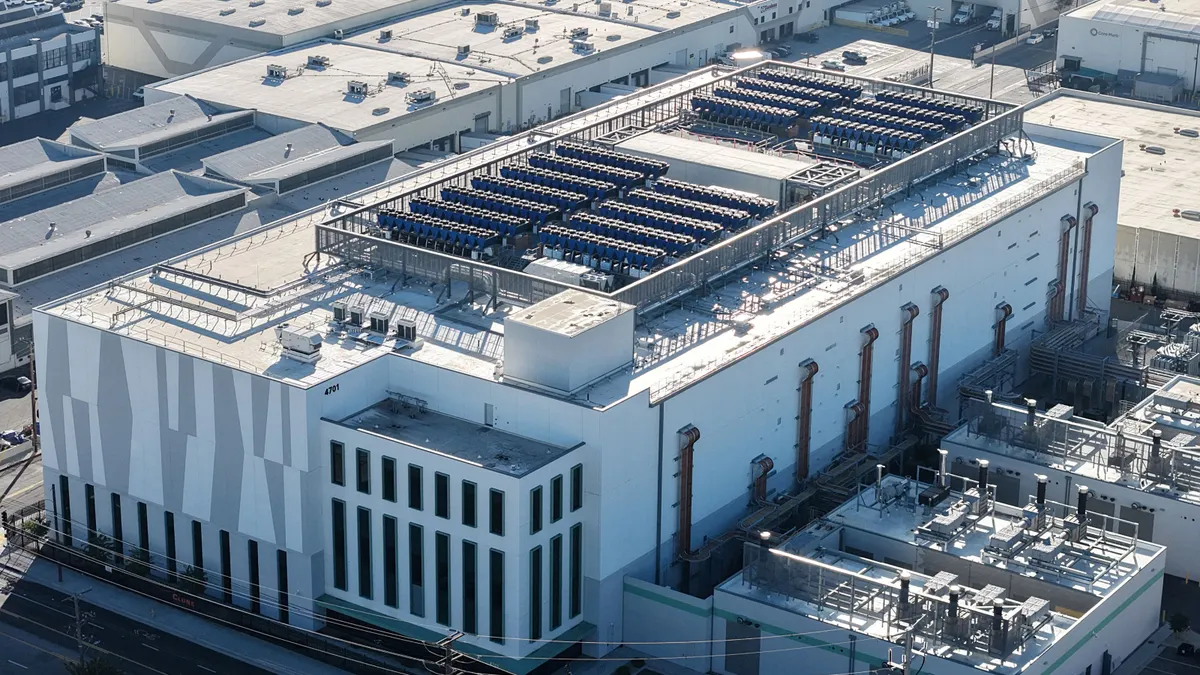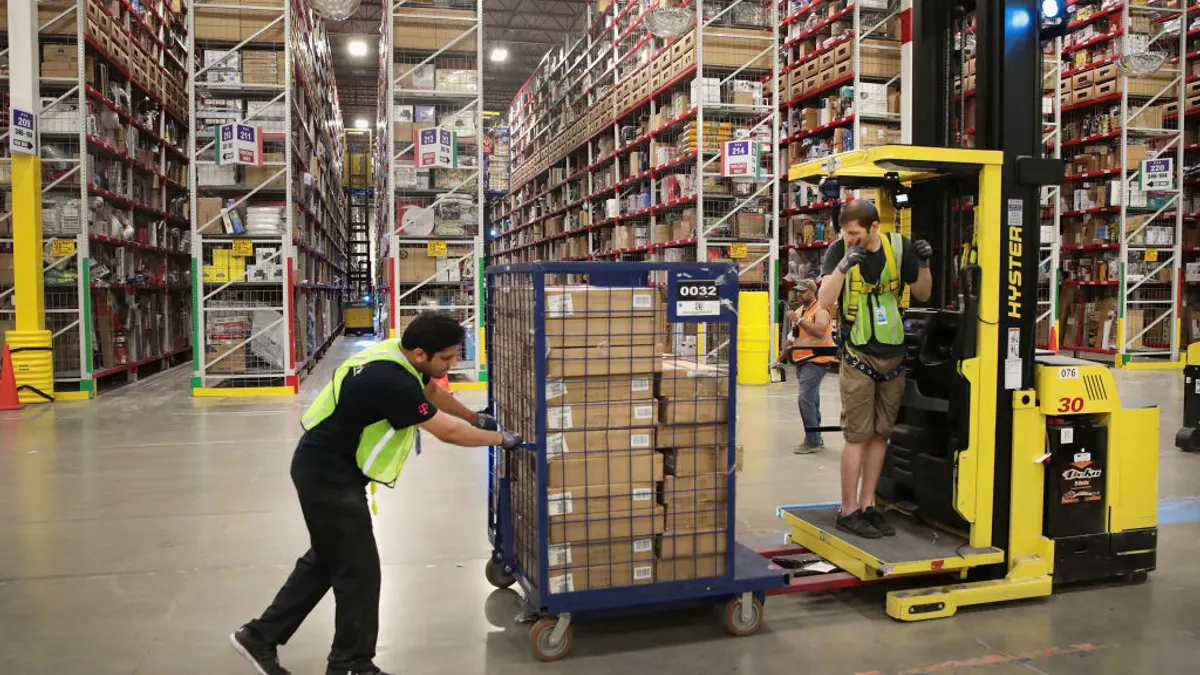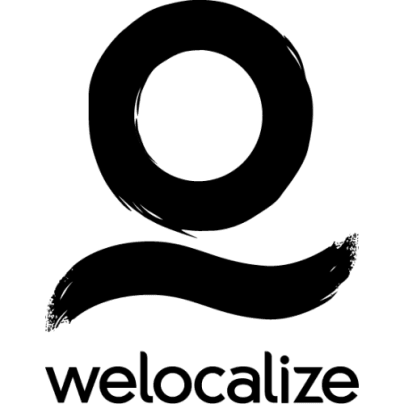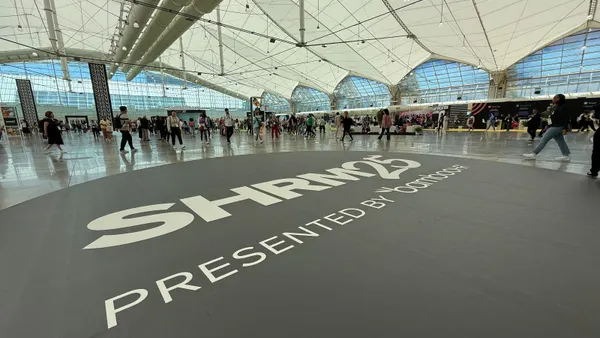Return-to-office mandates are heating up again, with well-known companies like Starbucks, Target and Google in the past month ordering employees to increase their time in the office. Some have initiated voluntary exit programs for those who would rather not.
Hybrid work arrangements remain common and integral to the current workplace, however, with office operators investing in collaboration technologies that can effectively facilitate flexible work and engagement between employees, whether they are in the office or remote, according to recent studies.
Starbucks corporate employees will have to return to the office four days a week starting in October, the company announced Monday, offering workers who would prefer to leave a “one-time voluntary exit program with a cash payment,” CEO Brian Niccol said in a letter to employees, CNBC reported. The company head previously told workers they were at risk of being fired if they didn’t return to the office three days a week.
Target’s commercial unit employees are being asked to return to the office at least three days a week starting September 2, CBS News reported. The Minnesota-based staff will be able to pick which week days suit them best, according to a memo by Chief Commercial Officer Rick Gomez.
Elsewhere in the state, Maplewood-based 3M informed employees that it will require them to be in the office at least four days a week, while U.S. Bank and General Mills this year enacted their own three-day-a-week office mandates. The state is also pushing for more attendance from workers, with Gov. Tim Walz asking state workers to return to the office for 50% of their workdays.
Walmart and Google have issued similar orders in the past six months, with Google introducing a voluntary exit program for some U.S. teams and tightening return-to-office policies for remote employees living near offices, Fortune reported July 11.
A survey by Cisco found a “clear, global trend toward increased in-office work,” with 72% of respondents’ organizations having mandates for working in the office, according to the company’s 2025 global hybrid work study released in June. Nearly half (46%) of respondents said their organization’s hybrid work policy requires more time in the office than prior policies.
In part, these initiatives have helped drive an increase in office visits, according to data from location analytics software firm Placer.ai. Following a decrease in attendance in May, foot traffic recovered in June, improving 8.3% year over year but still 27.4% below 2019 levels. June was the fourth busiest in-office month since the pandemic, according to the Placer.ai, which analyzed foot traffic data from about 1,000 U.S. office buildings.
The increase in attendance was led by Miami and New York, with both nearing full post-pandemic recovery. Atlanta, Dallas and Houston also outperformed the U.S. overall. San Francisco, which remained furthest from pre-pandemic attendance levels, also was making progress toward getting people into the office, Placer.ai says.
Hybrid work, collaboration tools remain crucial
Despite the trend, 40% of interactions in the office still have at least one person joining remotely, on average, according to Cisco’s survey.
Hybrid work arrangements remain “a cornerstone of the modern workplace,” Cisco says. It notes that 90% or more of employers and employees recognize collaboration technology as crucial to enabling engagement and flexibility, resulting in increasing investments in these technologies.
Despite the availability of collaboration tools, only 49% of employees feel workflows are seamless across all work locations, underscoring the need for better technology devices and capabilities that can provide better employee experience, according to the report.
“As the future of work continues to evolve, it is essential to invest in flexible and scalable technology that adapts to changing workforce needs,” Amit Barave, vice president of product management for Webex at Cisco, told Facilities Dive in an email. “At a high level, facilities and IT must prioritize an integrated and seamless experience to ensuring that hardware and software work together harmoniously. This enhances operational efficiency and also provides a cohesive user experience that supports productivity.”
Integration of the tools is key, Barave said.
“First and foremost, success hinges on understanding the actual workflows and needs of your employees,” he said. “Before making deployment decisions, take time to understand how teams collaborate, what their pain points are, and how new tools can genuinely enhance their day-to-day.”
Advanced analytics tools can help leaders assess employee satisfaction and the adoption of collaboration tools and workplace resources, according to Barave. But facility managers must be careful when making decisions around these tools, especially as it relates to the technical support required to maintain them, he said.
For example, when weighing in-house versus outsourced support for these technologies, operators must critically assess several key aspects, such as the specialized expertise of support teams for hybrid tools; their scalability and flexibility; and robust security and compliance measures.
They also must ensure there are clear service level agreements in place for response times and determine whether the support is proactive or merely reactive, Barave said.
“The user experience for accessing support is critical as well, as it must be intuitive and efficient for employees working from anywhere,” he said.
To better serve organizations and their employees during this transition period, the relationship between facility managers, real estate operators and businesses must take the form of a strategic partnership, according to Barave.
“The key is regular, proactive conversations focused on understanding each business’s goals — especially as hybrid work continues to evolve,” he said. “Facilities managers and operators can ask, ‘What are your priorities for the next 12–24 months, and how can our spaces help you achieve them?’ and provide data-driven insights to support better decisions.”
Corporate and commercial real estate operators should also establish clear metrics for success and a feedback loop. By measuring tangible outcomes, like increased productivity and improved employee satisfaction, office operators can validate technology investments, identify areas for adjustment and continue to better align their solutions with evolving business needs, according to Barave.
“Success comes from listening closely, adapting together, and always aiming to enhance partners’ business outcomes,” he said.























